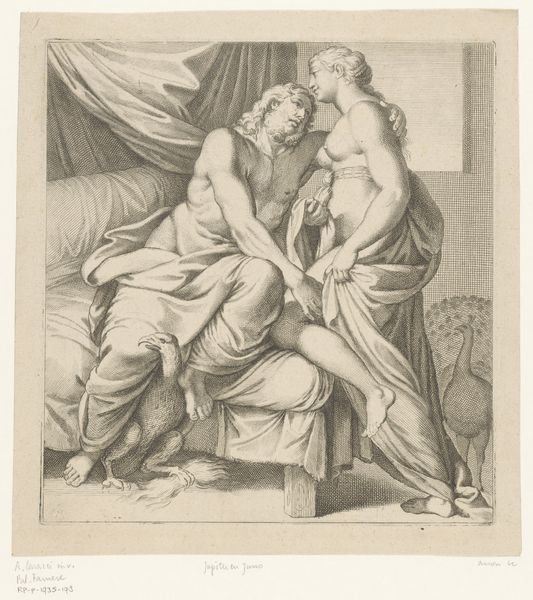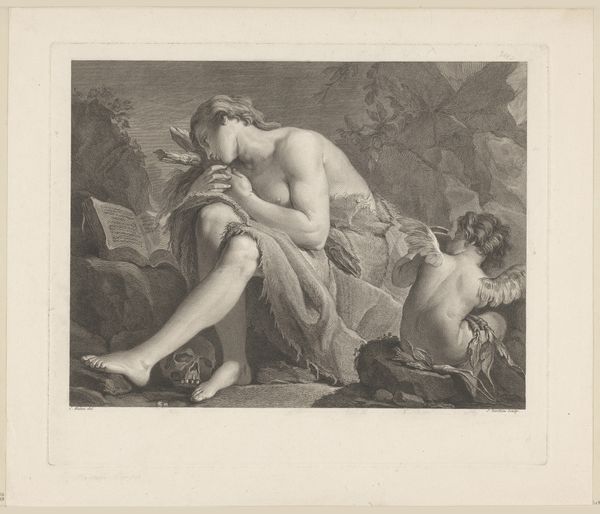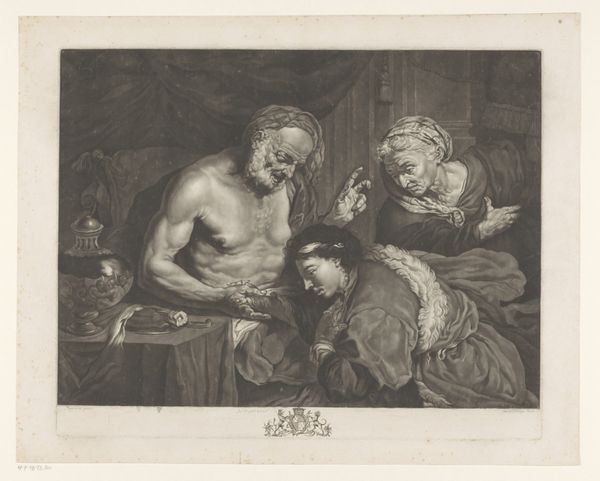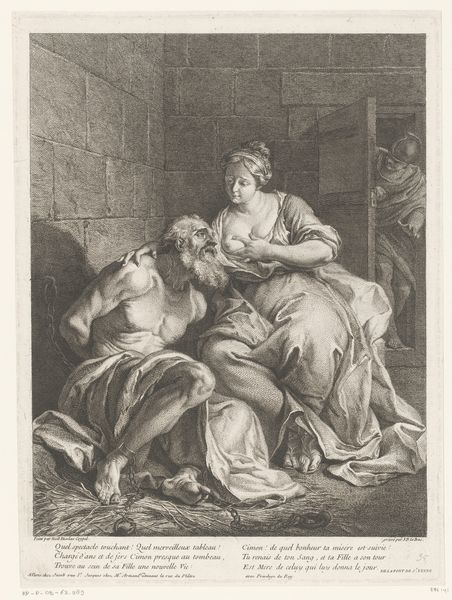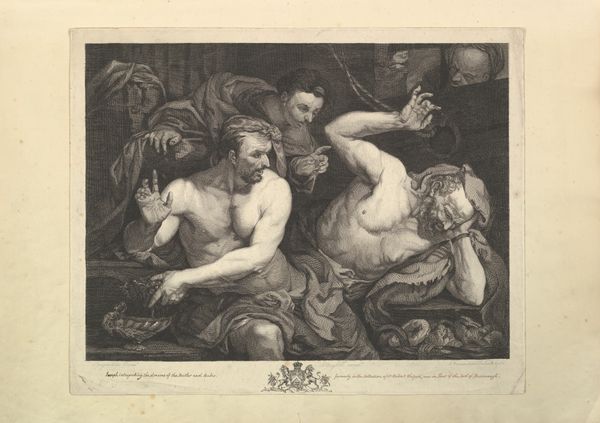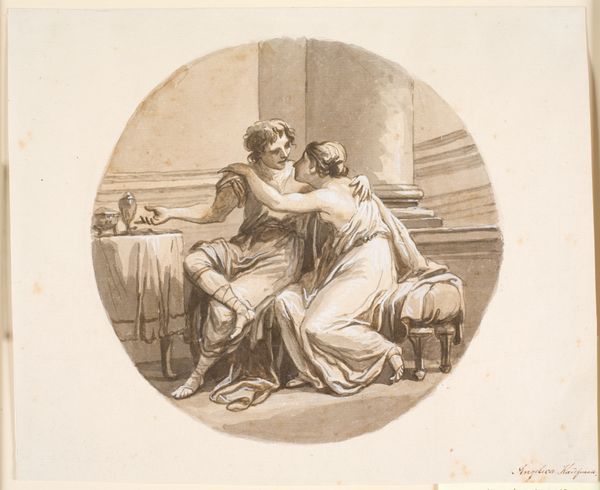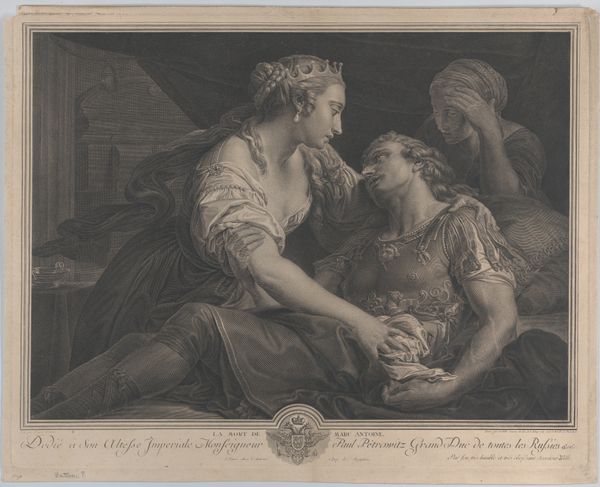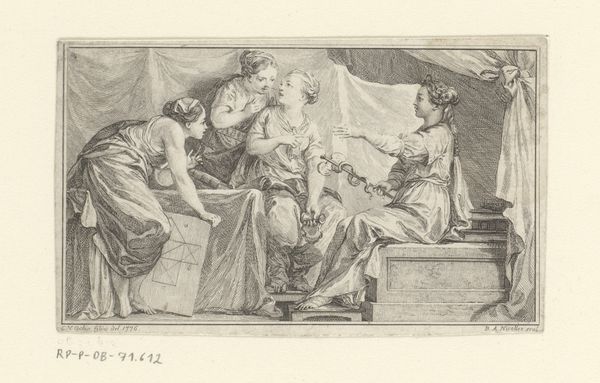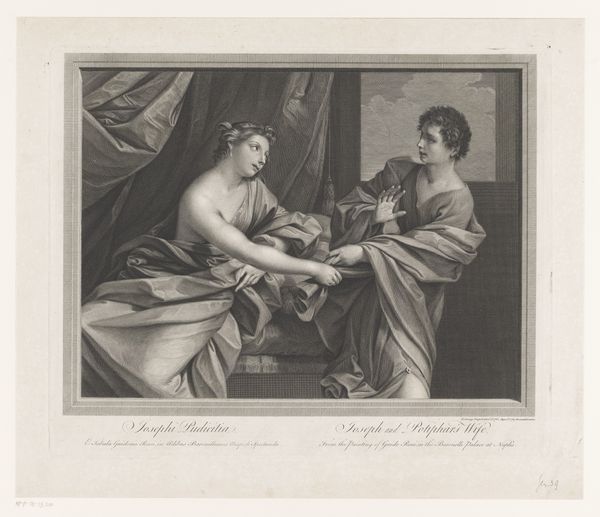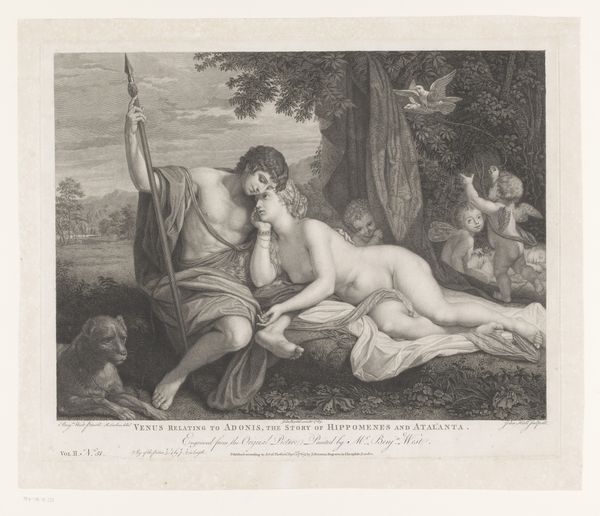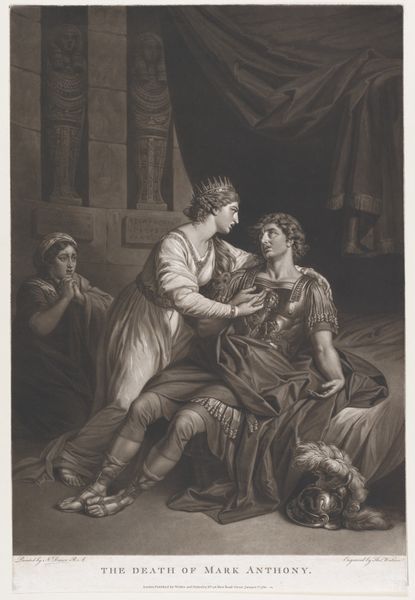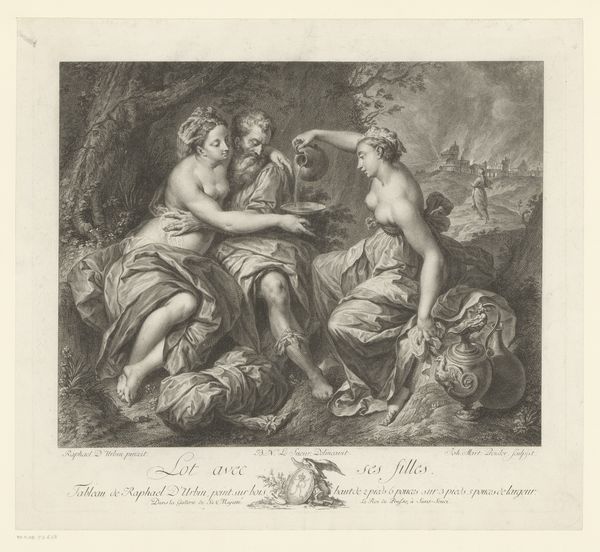
Dimensions: height 382 mm, width 488 mm
Copyright: Rijks Museum: Open Domain
Editor: This is Johann Georg Wille’s “Marcus Antonius sterft in de armen van Cleopatra,” an engraving from 1778 currently housed in the Rijksmuseum. It feels theatrical, almost operatic, with the dramatic lighting and the exaggerated expressions. What formal elements strike you the most? Curator: The stark contrast of light and shadow certainly directs the eye, doesn't it? Note how the artist uses the white of the paper to sculpt form. See how Wille uses chiaroscuro not only to model the figures but to amplify the emotional weight of the scene. It underscores the pathos. Observe the strategic deployment of line, etching minute details, conveying textures and volumes. Editor: It’s interesting how the smoothness of Cleopatra’s skin is rendered, versus the very clear detail in the armor. It draws your attention right away. Curator: Precisely. It’s a play on surfaces, isn't it? The artist establishes a visual hierarchy using texture, almost a taxonomy of feeling through form. Consider the artist's compositional choice to center Cleopatra; what message do you believe he’s relaying about power, gender, or love in that placement? Editor: That makes sense. The way the light is positioned it leads my eyes straight to her face and her reaching arm. This really brings forward the central dynamic between the characters. Curator: The very fabric of the print communicates an affective quality that mere representation struggles to deliver. The image transforms before our eyes; and, reciprocally, the self. Editor: Thank you. I've never thought about prints carrying that sort of emotionality. Curator: Form truly is the conduit of feeling.
Comments
No comments
Be the first to comment and join the conversation on the ultimate creative platform.
